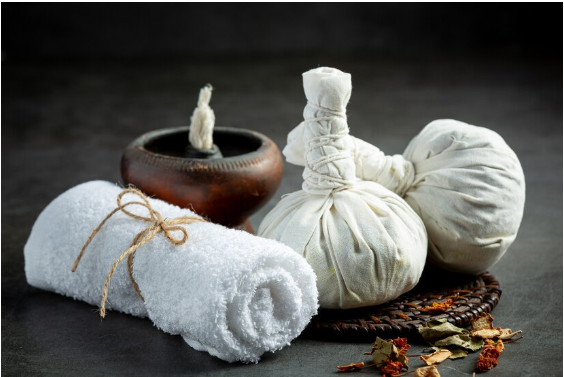
The Post-Thai Massage Experience: Mind and Body Transformations Unmasked
A visit to Thailand isn’t complete without indulging in the ancient art of Thai massage – a practice that is as much a part of the country’s identity as its rich cuisine and stunning landscapes. After your session, you’ve likely felt the immediate physical benefits; the relaxation of tense muscles, the freer movement of your joints, the improved circulation. But what about the subtle, long-lasting effects that unfold over the hours and days that follow? This post-massage phenomenon is an interplay of physical recovery and psychological rejuvenation, and here, we’ll explore it in detail.
The Immediate Release: A Body in Motion After Massage
Thai massage isn’t just a treatment; it’s a dance between the practitioner and the recipient, a meticulously choreographed sequence that manipulates the body into a series of yoga-like stretches. This immediate experience can unlock joint restrictions, improve flexibility, and encourage a deeper sense of relaxation. But what’s happening under the skin is just as significant.
The mechanical pressure of massage techniques stimulates blood flow, which then nourishes the tissues with oxygen and flushes out metabolic byproducts, contributing to an immediate sense of well-being. This enhanced circulation isn’t temporary; it leaves a trail of rejuvenation that the body can tap into over the days to come. Learn more from- Complete Thai Massage Course Online.
The Uncoiling Effect: Muscles at Peace
The gentle, sustained pressure used in Thai massage works to release chronic tension stored in the deepest layers of muscle tissue. Known as ‘Sen lines’ in the Thai tradition, these energy pathways can become blocked, leading to aches, pains, and a feeling of lethargy. The massage aims to restore the body’s innate balance, and the immediate aftermath sees muscles that are at peace, ready to serve your body’s needs in comfort.
How does this newfound flexibility translate into post-massage life? It fosters a sense of being more at ease in your movements, with a reduced risk of muscular pain and injury. The body’s posture realigns, breathing deepens, and the mind can begin to clear the mental cobwebs that accompany physical discomfort.
The Quiet Revival: Psychological and Mental Shifts
Thai massage isn’t just about the body—it’s a holistic modality that addresses the person as a whole. The deep state of relaxation achieved during the massage triggers the parasympathetic nervous system, which is responsible for the body’s ‘rest and digest’ activities. These include lowering heart rate and blood pressure and enhancing digestion. But in the long term, the psychological effects are equally profound.
Post-massage, many report a quiet sense of calm that endures. A clarity of mind may take the place of the pre-existing mental fog. Stress and anxiety can often seem more manageable, and sleep, often disrupted by the relentless buzz of daily life, may become more restorative. The period following the massage is a time of transition, where the mind has an opportunity to reset and establish a new baseline of calm.

The Lasting Effects: Weeks After the Massage
The effects of a profound Thai massage can extend far beyond the immediate and short-term benefits. The increased awareness of one’s body nurtured during the session often remains, promoting better self-care and a desire to maintain the balance that has been restored.
In the weeks that follow, the seeds planted by the massage continue to bear fruit. Slowly, you may notice a heightened sense of your body’s needs – you might unthinkingly adopt better posture, be more attuned to the signals of fatigue, and perhaps even take up practices like yoga or meditation to supplement the experience.
Tips for Enhancing and Sustaining Post-Massage Bliss
It’s one thing to enjoy the benefits of a Thai massage, but it’s another to maximize and maintain them. Here are some science-backed tips for enhancing and sustaining the ‘massage high’:
Hydrate: Deep massage can release toxins from tissues, and staying hydrated helps to flush them out, contributing to clearer skin, better organ function, and an overall sense of wellness.
Nutrition and Diet: Eat nutritious, whole foods to support your body’s recovery. Focus on anti-inflammatory foods like fruits, vegetables, and Omega-3-rich fish.
Movement and Exercise: Utilize your newly relaxed muscles with gentle stretching or walking to maintain flexibility and strength.
Mindfulness and Self-Care: Take time for yourself and practice mindfulness through meditation or simply being aware of your breath and body.
Regular Massage Sessions: Incorporating regular massage sessions into your wellness routine can amplify and prolong the benefits, ensuring a continued state of balance and vitality.
Case Studies and Testimonials
Case Study A: Easing Stress and Anxiety
Karen visited Thailand and, out of curiosity, tried her first Thai massage. She recalls a significant decrease in her overall stress levels, which, in her high-stress job back home, was nothing short of a miracle. Karen started to notice a change in how her body and mind handled pressure, leading her to investigate complementary practices to sustain these benefits.
Case Study B: Improved Athletic Performance
Tom, an amateur runner, found that post-massage, his muscles retained a newfound suppleness that translated into better performance and a significantly shorter recovery time between runs. The sessions also acted as an alert system for overuse, with his body’s responsiveness increased and pain signals seeming more communicative and less like a hindrance.

Final Thoughts
Thai massage is not just a simple checklist of benefits; it is a life-altering practice that cultivates mindful awareness and an ongoing investment in self. By experiencing this tradition, you can tap into the qualities of patience, grace, and resilience within yourself and integrate these lessons into a broader philosophy of self-improvement, personal discovery, and holistic well-being.







